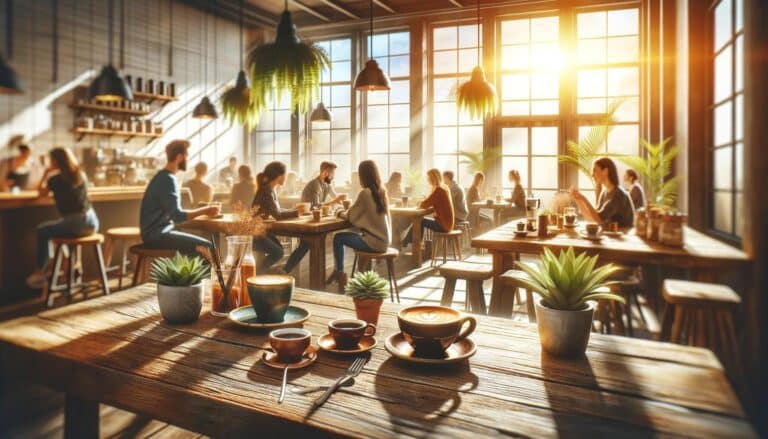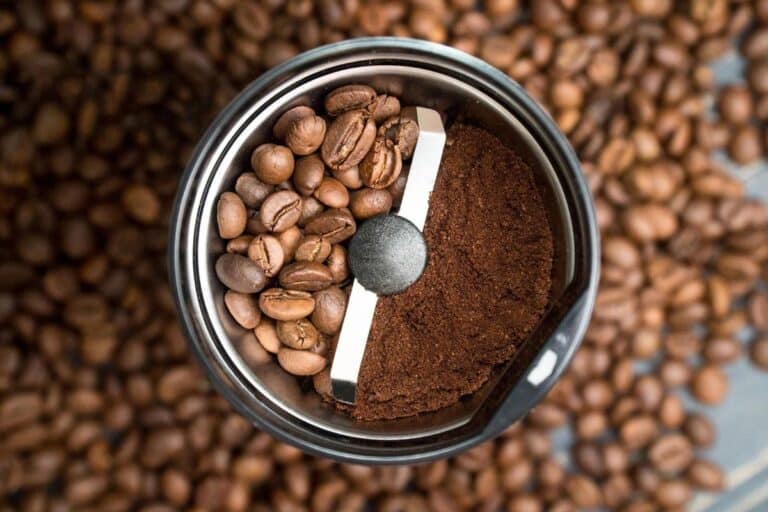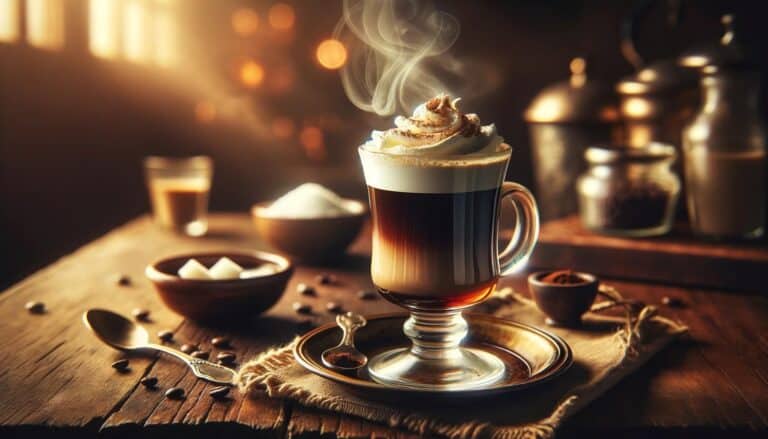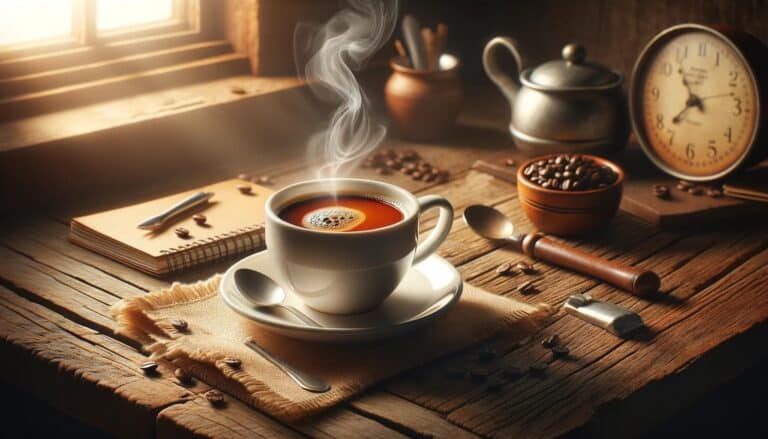Coffee doesn’t just serve as a drink; it’s a worldwide sensation that connects cultures, inspires creativity, and gets our mornings going. It has a deep history that stretches back for centuries, making it one of the most cherished drinks all over the world. People love it for its uplifting smell and intricate tastes. From the busy coffee shops in the United States to Turkey’s traditional coffee houses and Italy’s espresso bars, coffee plays a crucial role in the daily habits and social scenes around the planet.
But with the universal love for coffee comes a fascinating question that makes both serious coffee lovers and those who enjoy a casual cup think hard: Does the temperature at which we serve coffee change its quality? Some people insist on very hot coffee because they believe it has a stronger flavor and feels cozy, while others prefer their coffee warm or even cold, saying that different temperatures can bring out different flavors and create various experiences for our senses. This question isn’t just about what we like; it also involves chemistry, physics, and the science of tasting, which makes finding out how temperature affects coffee an interesting topic.
In this article, we’re going to explore this debate thoroughly. We’ll look into the science of how brewing and serving coffee at different temperatures affects its taste, smell, and how much we enjoy it. We’ll also see what experts think about getting the temperature just right. Whether you’re an expert on coffee or just like drinking it now and then, learning about how temperature impacts coffee can make your coffee-drinking experience better. It might even encourage you to try out new temperatures to find your perfect cup of coffee.
Is Hotter Coffee Better Coffee?
The optimal brewing temperature for coffee is between 195°F to 205°F (90°C to 96°C), but serving it slightly cooler, at 140°F to 160°F (60°C to 71°C), enhances its flavors and aroma without risking bitterness or burning. High temperatures can impair taste perception, making it harder to enjoy the full range of coffee’s nuances. Personal preference plays a role, but for health and flavor reasons, hotter coffee is not necessarily better.
The Science of Coffee Brewing

Optimal Brewing Temperatures
When it comes to brewing coffee, temperature plays a pivotal role in the extraction process, directly influencing the taste, aroma, and overall quality of the final cup. Brewing temperature refers to the temperature of the water used to brew the coffee, which can significantly affect the extraction of flavors and compounds from the coffee grounds.
The process of extraction involves pulling out the flavors, oils, and compounds from the coffee grounds into the water. The optimal brewing temperature is generally considered to be between 195°F and 205°F (90°C to 96°C). At this range, the hot water is capable of extracting the coffee’s optimal flavors — not too bitter, not too sour, but a balance that brings out the coffee’s natural characteristics.
Water below this temperature range tends to under-extract the coffee, resulting in a brew that can taste weak, sour, or even salty, as the water is not hot enough to extract the full spectrum of flavors. On the other hand, water that is too hot can lead to over-extraction, pulling out undesirable bitter compounds and resulting in a harsh and burnt taste.
The Role of Temperature in Flavor Development
The role of temperature in flavor development is not just about the brewing process; it extends to how heat affects the chemical compounds present in coffee. Coffee contains hundreds of chemical compounds, including acids, oils, and aromatic molecules, all of which contribute to its flavor profile. Heat can alter these compounds in several ways, enhancing some flavors while diminishing others.
- Acidity and Heat: Heat can break down certain acidic compounds in coffee, affecting the brew’s overall acidity. A correctly heated brew will highlight the coffee’s natural acidity, giving it a lively and bright quality without making it overly sour.
- Bitterness and Extraction: Bitterness in coffee is primarily a result of over-extraction. High temperatures can facilitate the extraction of bitter-tasting compounds like quinic acid and phenylindanes, especially if the brewing time is too long. Thus, controlling the temperature is crucial to minimize bitterness.
- Sweetness and Balance: The sweetness in coffee, often a result of the presence of certain sugars and aromatic compounds, can be enhanced by proper extraction. The right temperature helps in extracting these sweeter flavors, balancing the coffee’s overall taste profile against its acidity and bitterness.
The interaction between heat and the coffee’s chemical makeup is complex. It requires careful control to ensure that the extraction process results in a well-balanced cup. The goal is to achieve a harmonious balance between bitterness, acidity, and sweetness, with each element contributing to the coffee’s depth of flavor without overpowering the others.
Understanding the science of coffee brewing and the role of temperature in flavor development is essential for both baristas and home brewers alike. By mastering the art of temperature control, one can unlock the full potential of the coffee, creating a cup that is not only satisfying but also a true reflection of the beans’ inherent qualities.
Perception of Taste at Different Temperatures

Sensory Science: Temperature vs. Taste Perception
The temperature of coffee significantly affects our perception of taste, a phenomenon well-documented in the field of sensory science. Our taste buds, the primary sensory receptors for taste, are sensitive to temperature changes, which can alter the intensity and quality of flavors perceived. Warm temperatures tend to enhance our ability to taste sweetness and bitterness, while cooler temperatures might make these tastes less pronounced. However, extremely hot temperatures can also impair our taste perception by causing discomfort, thereby detracting from the overall tasting experience.
Studies in sensory science have investigated the optimal temperature for tasting coffee, aiming to find the sweet spot where the full range of flavors is perceptible without causing discomfort. Research suggests that the ideal temperature range for consuming coffee to fully appreciate its flavor profile is between 120°F and 140°F (48°C to 60°C). At this range, the heat is enough to amplify the flavors without overshadowing the coffee’s natural qualities or causing a numbing sensation that might inhibit taste perception.
Consumer Preferences and Habits
Consumer preferences regarding coffee temperature vary widely, influenced by personal taste, habits, and even cultural background. Survey data indicates a broad spectrum of preferred drinking temperatures, with some consumers favoring hot coffee for its warming qualities and others preferring cooler temperatures for the nuanced flavors they perceive at lower heat.
Cultural differences play a significant role in coffee serving temperatures. For example, in the United States and much of Europe, hot coffee is a morning staple, often served at temperatures close to the brewing point. In contrast, countries with hotter climates, such as those in the Middle East or Africa, may serve coffee at slightly cooler temperatures to accommodate the environmental heat, focusing on the balance of flavors that can be enjoyed without the discomfort of excess heat.
Moreover, the popularity of cold brew coffee, particularly in the United States, highlights a growing trend towards enjoying coffee at much cooler temperatures. Cold brew, made by steeping coffee grounds in cold water for an extended period, offers a different flavor profile, often described as smoother and less acidic than hot brewed coffee. This preference for colder coffee has expanded the dialogue about optimal coffee temperatures, incorporating not just the immediate sensory experience but also the influence of preparation methods on taste perception.
In summary, the perception of taste at different temperatures is a complex interplay of sensory science, personal preference, and cultural practices. Understanding these dynamics can offer coffee lovers insights into how best to enjoy their favorite beverage, whether they’re reaching for a piping hot espresso or a refreshing cold brew.
The Health Perspective

Coffee Temperature and Health Risks
The temperature of coffee and other hot beverages has been a subject of health-related research, with studies investigating how consuming very hot drinks might affect one’s health. The World Health Organization (WHO), through its International Agency for Research on Cancer (IARC), has conducted extensive reviews on the potential risks associated with consuming hot beverages.
In 2016, the IARC classified drinks consumed at temperatures above 65°C (149°F) as “possibly carcinogenic to humans,” based on studies that suggested a link between very hot beverage consumption and an increased risk of esophageal cancer. The primary concern is that regularly consuming beverages at such high temperatures could lead to thermal injury of the esophagus, potentially contributing to the development of esophageal cancer over time.
The WHO’s findings underscore the importance of allowing hot beverages like coffee to cool down to a more moderate temperature before consumption. While coffee itself, when consumed at moderate temperatures, has been associated with various health benefits, including reduced risks of certain diseases, the emphasis here is on the temperature at which it is consumed rather than the coffee itself.
The Cold Brew Comparison
The method of brewing coffee can also influence its nutritional profile and health implications. Cold brew coffee, which is made by steeping coffee grounds in cold water for an extended period (usually 12 to 24 hours), offers a different set of nutritional characteristics compared to traditional hot brewed coffee.
- Acidity: Cold brew coffee is often found to be less acidic than hot coffee. The lower acidity can be gentler on the digestive system, particularly beneficial for individuals sensitive to the higher acidity levels in hot coffee.
- Antioxidants and Compounds: Both hot and cold brew methods extract antioxidants and other healthful compounds from coffee beans, although the levels and types of compounds can vary. Some studies suggest that the cold brew method may result in lower antioxidant activity, though the differences are not fully understood and can depend on many factors including the coffee bean type and the specific brewing process.
- Caffeine Content: There’s a common perception that cold brew coffee has a higher caffeine concentration than hot coffee, which can be true depending on the coffee-to-water ratio used in the brewing process. However, when diluted to typical serving concentrations, the caffeine content between cold brew and hot coffee can be quite similar.
The appeal of cold brew coffee extends beyond its taste and potential health benefits. Its smooth, mild flavor profile, combined with its lower acidity, makes it an attractive choice for many coffee drinkers, contributing to its growing market. Additionally, the convenience of making a large batch that can be stored in the refrigerator for several days adds to its popularity, especially among those with busy lifestyles or a preference for cold beverages.
In conclusion, when considering the health perspective of coffee consumption, it’s essential to look at both the temperature of the coffee and the method of brewing. Moderation and personal preference play significant roles in choosing how to enjoy coffee in a way that aligns with individual health goals and taste preferences.
Serving and Enjoyment
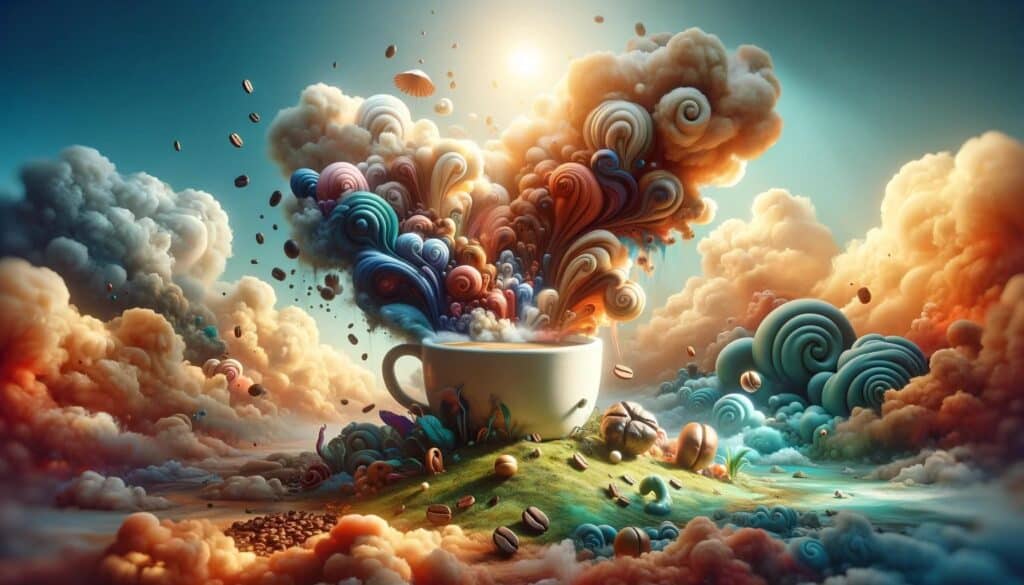
Barista Insights: Serving the Perfect Cup
Professional baristas play a crucial role in the coffee industry, consistently striving to serve the perfect cup of coffee. Their insights into serving temperatures are invaluable, as they balance scientific principles with the art of coffee making to enhance the drinking experience.
- Professional Opinions on Serving Temperatures: Most baristas agree that serving coffee at a temperature that allows customers to immediately enjoy their beverage without discomfort is key. This typically falls within the 120°F to 140°F (48°C to 60°C) range, considered optimal for tasting the nuanced flavors without risking burns. This range ensures that the coffee is hot enough to release its aromatics but cool enough to drink comfortably.
- Tips for Maintaining the Ideal Coffee Temperature at Home: Baristas recommend preheating your cup to maintain the coffee’s temperature once served. You can do this by pouring hot water into the cup, letting it sit for a minute, and then discarding the water before adding your coffee. Additionally, using a thermal carafe instead of a traditional glass pot on a warming plate can help maintain the optimal temperature for longer without overcooking the coffee.
The Equipment Factor
The equipment used in brewing and serving coffee plays a significant role in its temperature, impacting both the extraction process and the final serving temperature.
- Brewing Equipment and Temperature Control: Different brewing methods require different temperatures for optimal extraction. For instance, espresso machines use high pressure and temperature to extract coffee quickly, while French press or pour-over methods might use slightly cooler water for a slower extraction. Precision brewers with temperature control settings allow for a more consistent brewing temperature, catering to the specific needs of the coffee bean and grind size.
- Recommendations for Gadgets and Methods to Keep Coffee at the Ideal Temperature:
- Thermal Carafes: As mentioned, thermal carafes are excellent for keeping coffee at the right temperature without applying additional heat, which can degrade the coffee’s flavor.
- Smart Mugs: These mugs allow you to set an exact drinking temperature and maintain it for hours, ensuring each sip is as perfect as the first.
- Temperature Control Kettles: For those who brew coffee manually, a kettle with temperature control can ensure that the water is at the optimal temperature for brewing, leading to a better extraction and ultimately a better cup of coffee.
- Insulated French Presses: Unlike traditional glass French presses, insulated versions help maintain the brewing temperature throughout the steeping process, resulting in a consistent and flavorful brew.
Understanding and managing the temperature from brewing to serving is essential for achieving the perfect cup of coffee. The right equipment can make a significant difference, allowing coffee enthusiasts to enjoy their favorite beverage at the ideal temperature with every sip.
The Impact of Temperature on Coffee Shelf Life
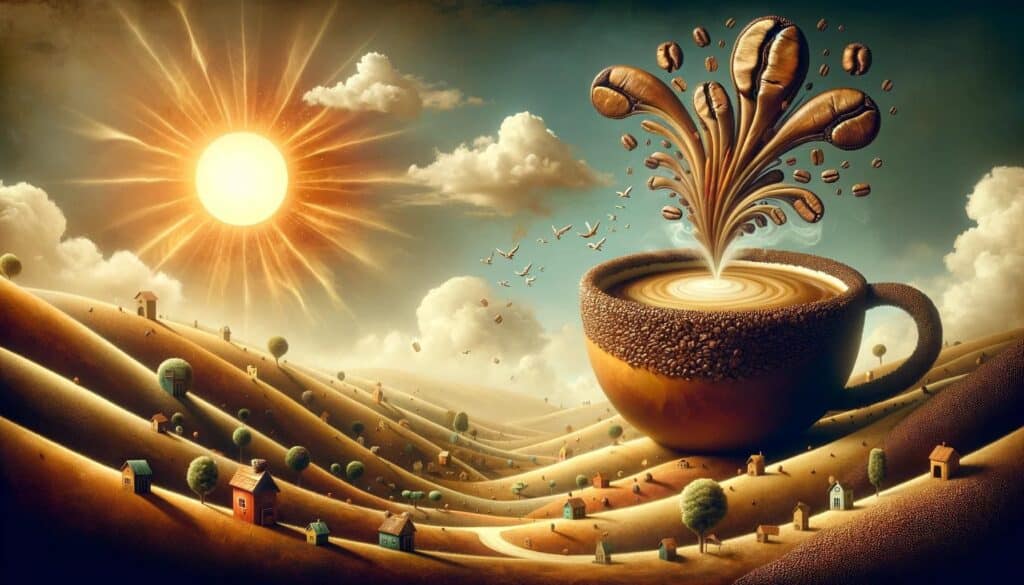
Temperature not only plays a critical role in the brewing and serving of coffee but also significantly impacts the shelf life and freshness of coffee post-brew. Understanding how temperature affects coffee after it’s brewed can help in maintaining its quality and flavor for as long as possible.
How Temperature Affects Coffee Freshness Post-Brew
Once brewed, coffee begins to lose its freshness due to the oxidation process and the evaporation of volatile compounds, which are responsible for its aroma and flavor. Temperature can accelerate these processes:
- High Temperatures: Keeping brewed coffee at high temperatures, such as leaving it on a warming plate, can rapidly degrade its quality. Heat accelerates the oxidation process and the evaporation of aromatic compounds, leading to a stale, bitter taste.
- Temperature Fluctuations: Frequent changes in temperature can also affect the freshness of coffee, both brewed and beans/grounds. For coffee beans or grounds, temperature fluctuations can cause condensation, leading to moisture in the package, which can spoil the coffee and promote the growth of mold.
Tips for Storing Coffee to Preserve Its Flavors
To maximize the shelf life and preserve the flavors of coffee, both in its brewed form and as beans or grounds, consider the following tips:
- Cool, Dark, and Airtight Storage: Coffee beans and grounds should be stored in an airtight container in a cool, dark place. Avoid clear containers that expose the coffee to light, and keep the coffee away from sources of heat, such as stoves or ovens, and away from areas where temperature fluctuations are common.
- Avoid Refrigeration for Daily Use: For coffee beans or grounds that you’ll use within a few weeks, avoid refrigeration as the fluctuating temperatures from opening and closing the refrigerator can lead to moisture problems. Instead, store them in a cool pantry.
- Freezing for Long-Term Storage: If you have more coffee than you can use in the near future, you can freeze it in an airtight container. However, once you take it out of the freezer, do not return it, as the temperature change can cause condensation and spoil the coffee.
- Drink Brewed Coffee Fresh: Brewed coffee is best enjoyed immediately after brewing. If you need to keep it for a few hours, use a thermal carafe that can maintain the temperature without further heating the coffee.
- Brew Only What You’ll Drink: To avoid waste and ensure the best flavor, try to brew only the amount of coffee you plan to consume immediately. This approach minimizes the need for storage and preserves the quality of the coffee.
By managing the temperature and storage conditions of both brewed coffee and coffee beans or grounds, you can significantly extend the shelf life of your coffee and enjoy its best flavors for longer.
Conclusion
Throughout this exploration of the multifaceted relationship between temperature and coffee, we’ve uncovered how crucial temperature is at every stage—from brewing to serving, and even in storage. Key points to remember include:
- Optimal Brewing Temperatures: The ideal brewing temperature range of 195°F to 205°F (90°C to 96°C) is critical for extracting the full spectrum of flavors without bitterness or sourness.
- Perception of Taste at Different Temperatures: Serving temperatures between 120°F and 140°F (48°C to 60°C) allow for an optimal tasting experience, balancing the enhancement of flavors with the comfort of the drinker.
- Health Perspectives: Very hot beverages may pose health risks, leading to recommendations to enjoy coffee at moderate temperatures. Meanwhile, the nutritional content and appeal of cold brew coffee offer a delightful alternative for those seeking a smoother, less acidic cup.
- Serving and Enjoyment: Insights from baristas emphasize the importance of serving temperature for the perfect coffee experience. Equipment plays a significant role in achieving and maintaining the ideal temperature.
- Coffee Shelf Life: Post-brew, temperature continues to impact coffee freshness. Proper storage practices are essential to preserve the flavors and extend the shelf life of coffee.
As we’ve journeyed through the science, the sensory experiences, and the practical aspects of coffee temperature, it’s clear that while there are guidelines and expert recommendations, personal preference plays a significant role in the ultimate coffee experience. Coffee, with its rich array of flavors, aromas, and traditions, invites a personal exploration into what makes the perfect cup for you.
Whether you’re a devotee of the piping hot morning brew, a fan of the gentle flavors of a lukewarm afternoon cup, or someone who revels in the refreshing briskness of a cold brew, there’s no right or wrong way to enjoy coffee. The invitation here is to experiment with different temperatures and brewing methods to discover what suits your palate best. Coffee is a personal journey, one that is continually evolving as we explore new flavors, techniques, and understandings of this beloved beverage. So, grab your favorite mug, experiment with your brew, and savor the journey—one cup at a time.
FAQs
- Does hotter coffee taste better? Hotter coffee doesn’t necessarily taste better. Taste perception, including flavors and aromas, can be influenced by temperature. Some studies suggest that moderate temperatures may allow a better balance of acidity, bitterness, and aroma, enhancing the overall tasting experience.
- Is coffee better when it’s hot? Whether coffee is better hot depends on personal preference. Hot coffee can enhance certain aromatic compounds, making the coffee’s flavor profile more complex. However, some people might prefer the smoother taste and different flavor profile of cold brew coffee.
- Which coffee is better, hot or cold? The choice between hot and cold coffee is subjective and depends on individual taste preferences. Hot coffee tends to highlight acidity and aroma, while cold coffee usually has a smoother, milder taste with less acidity.
- What temperature makes the best coffee? The Specialty Coffee Association recommends brewing hot coffee at a temperature between 195°F to 205°F (90°C to 96°C) for optimal extraction. Serving temperature is usually slightly lower to enhance taste without causing discomfort.
- Why do people prefer hot coffee? Many people prefer hot coffee for its comforting warmth, ability to highlight complex flavors and aromas, and its traditional role in many cultures as a morning or social beverage. The sensory experience of hot coffee also plays a significant role in its preference.
- Why do people like really hot coffee? People may prefer really hot coffee for its sensory qualities, including the feeling of warmth and the enhanced aromatic experience. However, preferences can vary widely, and what is too hot for one person may be perfect for another.
- How hot is Starbucks coffee? Starbucks typically serves its hot coffee at temperatures around 150°F to 170°F (65°C to 77°C), though this can vary based on the specific drink and customer preferences. This range is considered safe and enjoyable for most consumers.
- At what temperature does coffee become bitter? Bitterness in coffee can result from over-extraction or burning, rather than a specific serving temperature. However, brewing water that is too hot (above 205°F or 96°C) can contribute to over-extraction and increased bitterness.
- What is the safe coffee temperature for the elderly? For the elderly, especially those with diminished sensitivity to heat, a safe coffee temperature might be slightly lower than for the general population, around 140°F to 155°F (60°C to 68°C). This range helps prevent burns while still providing a warm beverage.

